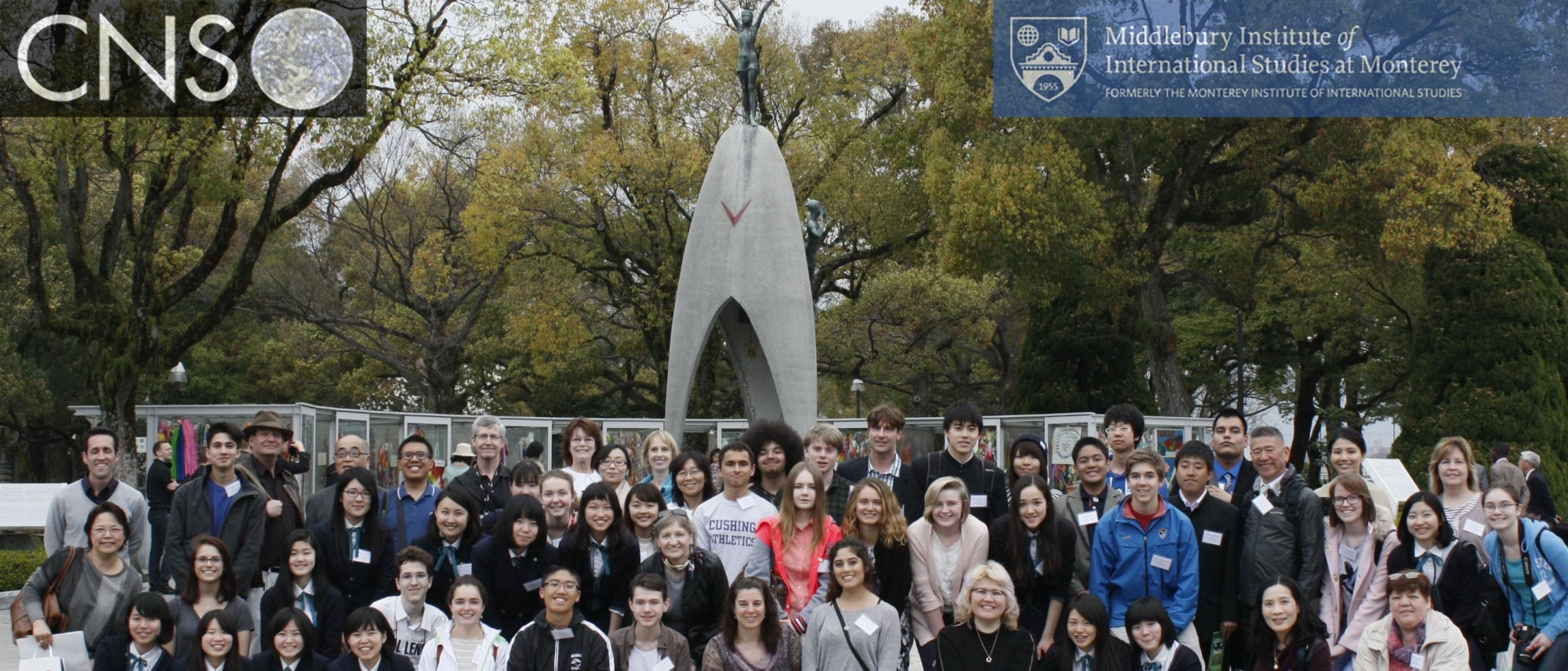Purpose
The CIF is designed to involve high school students and teachers in issues of proliferation and control of weapons of mass destruction. Our purpose is to increase awareness of disarmament and nonproliferation issues and to engage and recruit the next generation of nonproliferation specialists.
Pedagogy
The CIF curriculum design is based on the recommendations of the American Association for the Advancement of Science (AAAS) in Science for All Americans (1990) and the National Science Education Standards (1996) from the National Research Council; however, it is compatible with all national education standards. Further, our teachers have been able to adapt the curriculum to meet the education standards of their various states.
The CIF curriculum promotes higher order thinking skills by engaging students in authentic research on real topics of national and international importance. CIF provides students with instruction and guidance in research methodologies, including brainstorming, evaluation of content, synthesis of information, and writing. We make extensive use of the Internet for curriculum updates, data sharing, and communication among participants. CIF also allows students to share their work with peers in a professional style conference.
Structure
The flow of the curriculum is through the Benchmarks – broad statements of what we would like the students to learn. The Benchmarks engage learners in research, critical thinking, communicating thoughts, and making connections. The benchmarks also provide an assessment, for both program coordinators and the classroom teachers. The benchmarks provide a general statement of the topic. Benchmark I lays the groundwork of understanding including history, vocabulary, and timelines. Benchmark II defines the problem or situation. Benchmark III looks at current or future approaches to solving the problem or alleviating the situation. Each benchmark builds upon previous skills and knowledge bases, which allow the student/teacher teams to construct meaning from seemingly, unrelated material.
For example, Benchmark I for Chemical and Biological Weapons asked the students to learn which countries possessed these weapons and which did not. For the missile topic, students are asked to learn about the history of rocket and missile development. For Benchmark II students were asked to learn about the use and response to chemical or biological weapons. They are now asked to investigate real or perceived threats from missiles or missile technologies. In Benchmark III for both topics, the students are asked to investigate the treaties and regimes that control these weapons.
Following the Benchmark statement are the required objectives that detail the information students will be learning as they do their research. You may find the subject matter of your particular field will produce other objectives. We strongly encourage you to do so. However, please note that the required objectives specify facts, ideas, and skills that the program coordinators consider very important to assess student’ mastery of the subject matter.
For each objective there are several suggested activities. Experienced CIF teachers and CNS content experts have suggested the activities. They believe these activities will give the students directions to take in their search for information. The listed activities are our suggestions. We strongly encourage you and your students to come up with additional activities.
Because the students are doing authentic research on real world topics, they will soon find that they cannot concentrate their work in just one area. For this reason, we have delineated the following crosscutting domains that will connect their ideas in their submitted responses.
Scientific / Environmental – The impact of science is felt throughout society. Along with its advantages, science may also produce harmful effects or detrimental situations. The purpose of this domain is to identify the science within a given issue and to uncover the basic concepts present.
Social/Cultural – This domain defines the beliefs that people hold and the ties that bind them together. Societal and cultural beliefs affect the way people interpret information, how they perceive events, and how they react to events. Whether a religious, ethnic or diversity issue, the impact of this domain on a given issue can be considerable.
Economic – Economics plays a major part in national and international decision-making. Understanding the underlying economic needs and motives of individuals, nations, and special interest groups contributes to understanding major sources of competition or conflict.
Political/Geopolitical – Politics guides national and international policies. Politics, whether local, national, or global, often dominate an issue. Much of this domain centers on world events, leaders and decision-makers. Decisions made by those who govern require an understanding of the other domains as well.
To fully understand why a state may attempt to acquire or develop weapons of mass destruction, pros and cons in all four domains must be considered. For example, imagine a situation in which a country receives evidence that its neighbor and historical rival has started a nuclear weapons program. How will it respond? Lacking the scientific expertise and economic resources to develop nuclear weapons on its own, it may consider building a deterrent based on chemical weapons. However, export controls and international law make it difficult to obtain materials needed for such weapons. Furthermore, the nation’s culture may make possession of chemical weapons “dishonorable” to important domestic groups. Internationally accepted standards of behavior against chemical weapons also means the country would face intense criticism should the weapons ever be exposed. This could lead the country to consider political means, such as mounting an international diplomatic effort to pressure the neighbor to stop, or a conventional military strike on the neighbor’s nuclear facilities.


